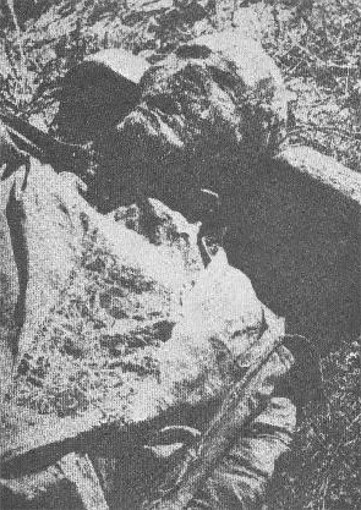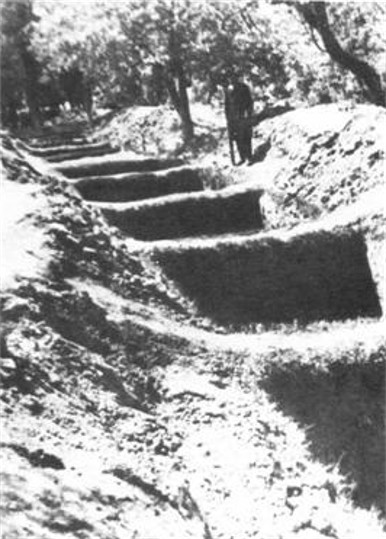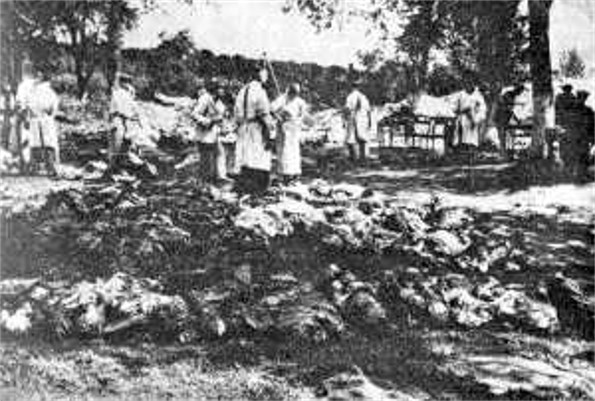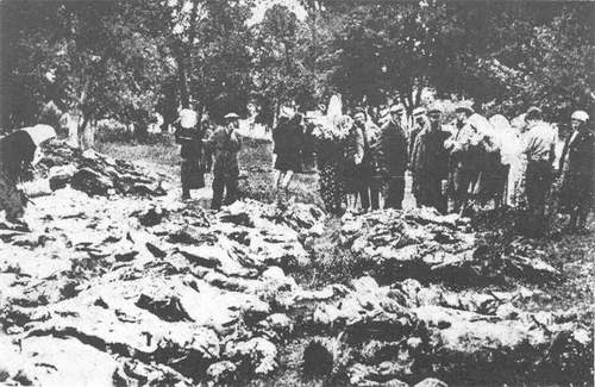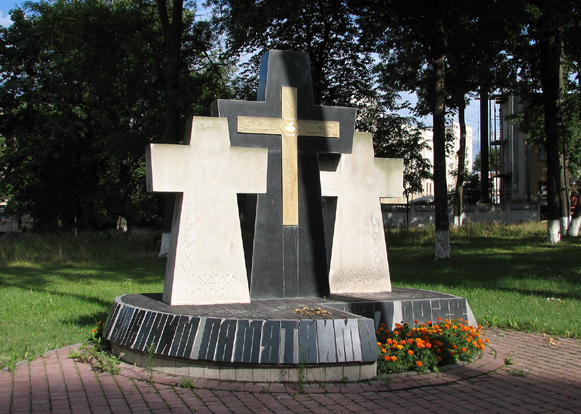Vinnytsia massacre
Vinnytsia massacre (Вінницький злочин or Вінницька трагедія; Vinnytskyi zlochyn or Vinnytska trahediia). A series of executions of thousands of citizens of the city of Vinnytsia and its surrounding area, perpetrated in 1937–8 by the NKVD during the Yezhov terror. The massacre was not the only action of its kind; many were carried out by the Soviet state security in prisons throughout the Ukrainian SSR. But the Vinnytsia massacre gained particular notoriety because of the extent to which it was made public. In an attempt to discredit the previous Soviet regime by highlighting the atrocities it had perpetrated, the German occupational forces, following the lead of eyewitnesses, exhumed the bodies of the massacre's victims between May and July 1943. To supplement the examinations made by German and Ukrainian doctors, the German authorities invited an international commission of medical experts to investigate the corpses found in 66 mass graves in the Vinnytsia area. Forensic scientists from Belgium, Bulgaria, Croatia, Finland, France, Hungary, Italy, Holland, Romania, Sweden, and Slovakia participated in July 1943.
It was reported that a total of 9,439 bodies (including 169 women) were recovered. Most of the victims had been shot in the back of the head; some had been buried alive. Only 10 percent of them were identified, largely on the strength of documents found on their persons, items of clothing, body markings, or other documents interred by the NKVD at another site. Among those identified were persons whose families had been told they had been sent to prison camps without right of correspondence. According to the testimony of Vinnytsia's citizens there were other graves, but the Germans were unable to investigate because they were eventually forced to retreat. The fact that the German Gestapo itself used the NKVD prisons and installations for mass murder prevented a comprehensive investigation of the NKVD's actions in other cities, towns, and villages, both in the 1937–8 period and during the Soviet retreat of 1941.
BIBLIOGRAPHY
Massenmord von Winniza (Berlin 1944)
Le crime de Moscou à Vinnytzia (Paris 1953)
Kamenetsky, Ihor (ed). The Tragedy of Vinnytsia: Materials on Stalin's Policy of Extermination in Ukraine (1936–1938) (Toronto–New York 1989)
Seleshko, Mykhailo. Vinnytsia: Spomyny perekladacha komisii doslidiv zlochyniv NKVD v 1937–1938 (New York 1991)
Sverstiuk, Ievhen; Skop, O. (eds). Vinnytsia—zlochyn bez kary: Dokumenty, svidchennia (Kyiv 1994)
[This article originally appeared in the Encyclopedia of Ukraine, vol. 5 (1993).]

